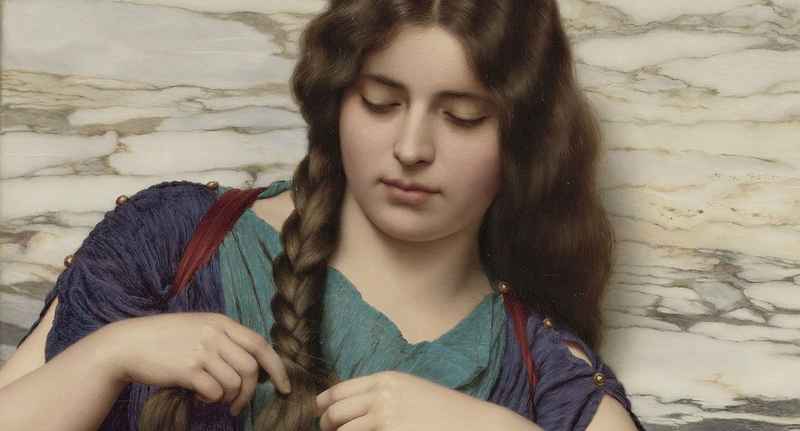John William Godward, a painter known for his Pre-Raphaelite and Neo-Classicist style, was born in the Wimbledon district of London, United Kingdom, in 1861. His professional artistic beginnings were somewhat delayed, despite showing an early inclination towards art, as his family largely disapproved of these pursuits.
Following his schooling, he worked for a short time at his father’s insurance company, but soon began studying architecture with William Hoff Wonter, whose son, William Clarke, was a painter with whom Godward would become close, lifelong friends. Although there is no definitive documentation, it is widely believed that Godward attended the St. John’s Wood Art School and the Clapham School of Art alongside William Clarke Wonter sometime in the early 1880s.
By the late 1880s, Godward was exhibiting his paintings regularly at the Royal Academy and the Royal Society of British Artists—where he gained membership in 1889. He was also shown by the art dealer Thomas McLean, who championed and produced prints of his work.
McLean’s support contributed a great deal to Godward’s growing popularity—and resultantly gave the artist enough financial security to move out from his parent’s home in Wimbledon. He relocated to the Chelsea neighborhood of London, and acquired a lease on a nearby studio that he filled with numerous marble statues and antiques, creating a milieu quite similar to the Greco-Roman settings found throughout his oeuvre.
In 1911, Godward travelled to southern Italy, and ultimately moved to Rome, near the Villa Borghese, where he stayed until 1921. The Villa Borghese, as well as numerous other ancient and classical homes and gardens, provided new source material and appear in a number of his compositions throughout this period of his career.

View John William Godward Paintings
Unfortunately, the artist was plagued by increasingly poor health and depression, and his artistic output drastically declined. The year following his return to London, 1922, Godward took his own life.
Godward’s paintings have been acquired by many premier art collections worldwide, including the J. Paul Getty Museum, Los Angeles; the Metropolitan Museum of Art, New York; and the British Museum, London.